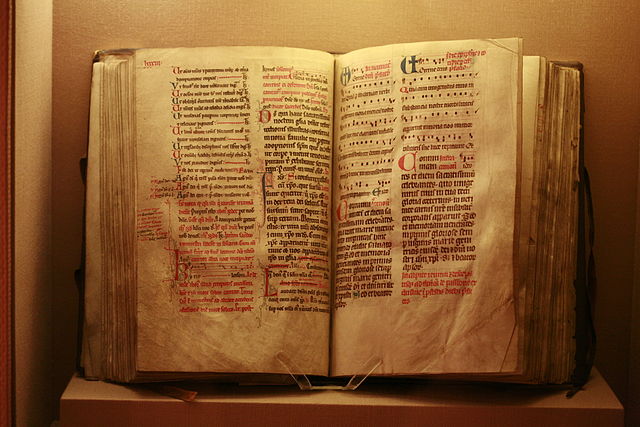A rubric is a word or section of text that is traditionally written or printed in red ink for emphasis. The word derives from the Latin: rubrica, meaning red ochre or red chalk, and originates in medieval illuminated manuscripts from the 13th century or earlier. In these, red letters were used to highlight initial capitals, section headings and names of religious significance, a practice known as rubrication, which was a separate stage in the production of a manuscript.
Dominican Missal, c. 1240, with rubrics in red (Historical Museum of Lausanne)
Rubrics in an illuminated gradual of ca. 1500
An illuminated manuscript is a formally prepared document where the text is decorated with flourishes such as borders and miniature illustrations. Often used in the Roman Catholic Church for prayers and liturgical books such as psalters and courtly literature, the practice continued into secular texts from the 13th century onward and typically include proclamations, enrolled bills, laws, charters, inventories, and deeds.
Illuminated manuscripts housed in the 16th-century Ethiopian Orthodox Church of Ura Kidane Mehret, Zege Peninsula, Lake Tana, Ethiopia
Frontispiece of the Maqamat al-Hariri (1237 CE) depicting a ruler in Turkic dress (long braids, Sharbush fur hat, boots, fitting coat), possibly Baghdad.
Page from a Latin book of hours, with miniatures of saints. Book of Hours of Alexandre Petau, 16th century, Rouen, well after printing had become more common.
The author of a manuscript at his writing desk. 14th century






